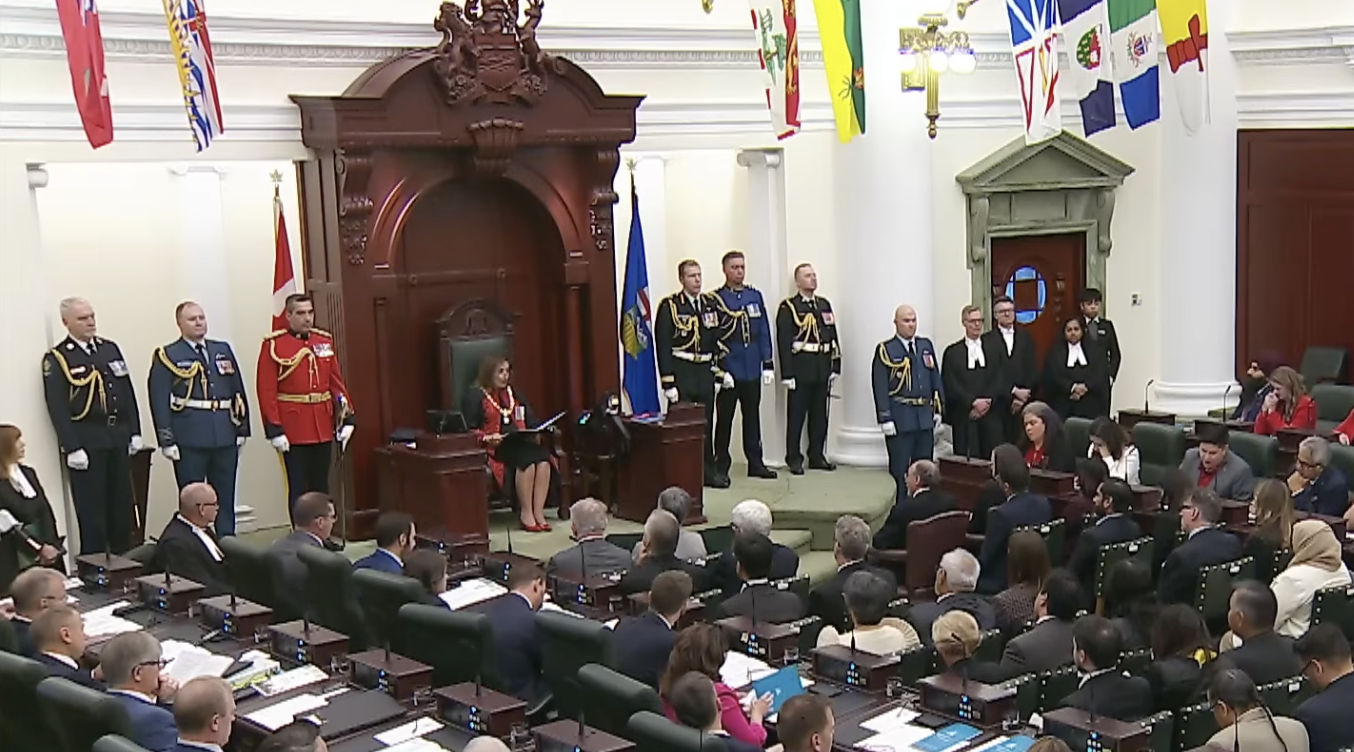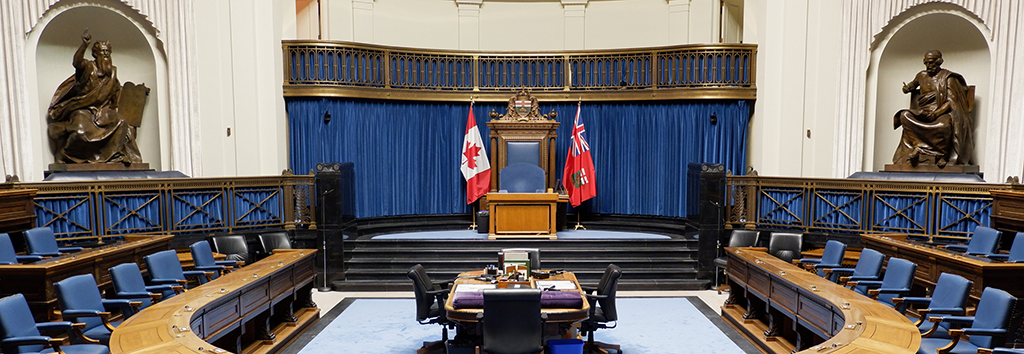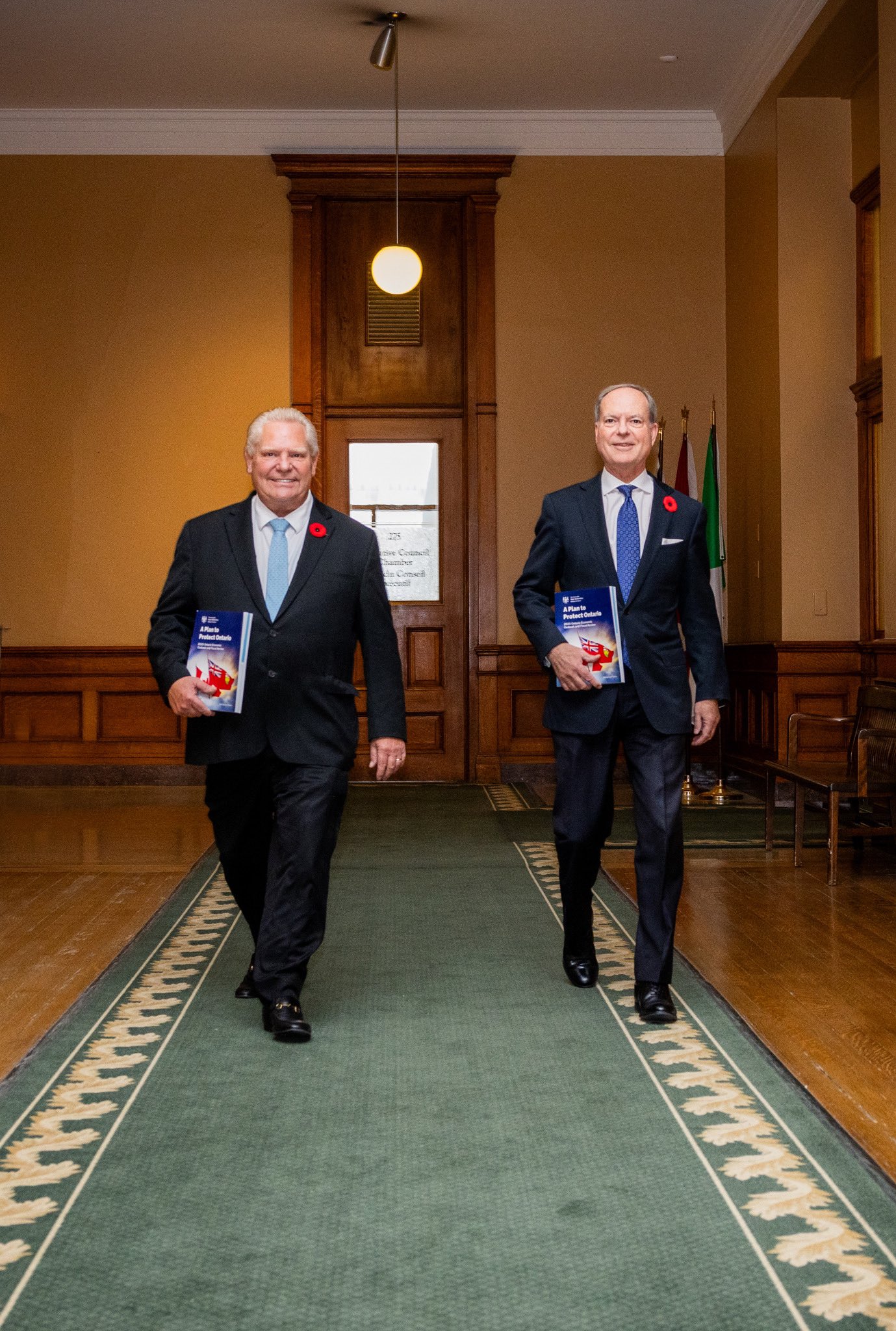A new legislative session began in Alberta late last week with a Speech from the Throne that articulated a vision of a "strong and sovereign" Alberta that will firmly defend its provincial jurisdiction and expand its resource economy, particularly through new pipelines. This agenda is supported by a domestic plan to transform public services like healthcare, a priority being placed on public safety, and a long-term fiscal strategy to end the province's reliance on commodity prices. It also clearly positioned the province's diplomatic strategy in regard to the province's and Canada’s relationship with the United States.
As the new session began—which notably saw new NDP Leader Naheed Nenshi take his seat for the first time opposite Premier Smith and the United Conservative caucus—thousands of striking teachers held a large protest on the legislature steps. This protest was in response to the ongoing labour dispute that has seen students out of the classroom for more than three weeks; the government's agenda confirmed that back-to-work legislation would be forthcoming. This news dominated much of the conversation and politics surrounding the speech.
The speech itself was a clear articulation of the government's vision at the approximate halfway point in Premier Danielle Smith’s majority mandate, beginning with a firm message on national unity. It outright rejected Alberta’s separation from Canada, stating that "a strong, free and sovereign Alberta" can and must exist within "a united Canada." At the same time, the speech reaffirmed the government's commitment to standing up for the province's interests, vowing to "oppose any federal policies that threaten the province and nation's economic prosperity" and invoking those constitutionally protected powers a number of times. This was further bolstered by the introduction of the session's first bill, The International Agreements Act, a clear shot across the bow for how Alberta will assert control over national decisions that have provincial impact. Likewise, a strong case was made for managing immigration based on provincial priorities—a clear message that the Province is frustrated with the Federal Government's management of the file.
A central theme was the urgent, forward-looking need for key infrastructure, with the government committing to the expansion of energy exports and the construction of new pipelines. The speech framed this as a nation-building project, essential for both Alberta's economy and Canada's. This theme was bolstered by the Premier’s appearance at a Federal Standing Committee on the Environment earlier that same day.
There was also a clear message on the fiscal picture, both highlighting the challenges, the priorities for investment, the need to control spending and the long-term need to make investments into the Alberta Heritage fund to get off the roller coaster of commodity prices having an impact on the province's purse. Specifically noting that the Provinces Heritage Trust Fund will be treated and grown like sovereign wealth funds found in resource rich countries like Norway.
The government also highlighted its diplomatic approach with the United States, noting that "direct Alberta-U.S. diplomacy" has been a key factor in stabilizing the critical trade relationship with the Trump administration. This was notable as the Premier took credit for these developments, creating a sharp juxtaposition with the federal government's and other provinces' positions.
On the provincial services front, the agenda focused heavily on a plan to innovate and transform government operations. This includes a significant move to introduce new models in the healthcare system by expanding "chartered surgical centres" and "private diagnostics," while also recommitting to the "Alberta Model" of recovery-focused addiction treatment. The government is also moving hospitals to a more competitive "activity-based funding model." The government defended this shift as long overdue, blaming governments, past and present, across the country, of all political stripes for failing to act and making it clear that it would not accept the status quo. This will no doubt generate some controversy, as seen by the response of the NDP opposition, but it signals a marked shift in messaging: that change is going to happen, despite the opposition. While the throne speech noted a few specifics, it made clear that the changes that were started in the health care system by Premier Smith in the aftermath of the last election are only the beginning.
Ultimately, the speech outlined an agenda defined by a clear dual focus. On the one hand, it charts a sovereign-minded, resource-driven economic policy aimed at federal and international partners. On the other, it details a plan to fundamentally transform public services in the province. While this agenda provides a clear roadmap of the government's priorities, its specific approach to healthcare reform and labour relations has already set the stage for significant debate that will no doubt define the fall legislative session.








